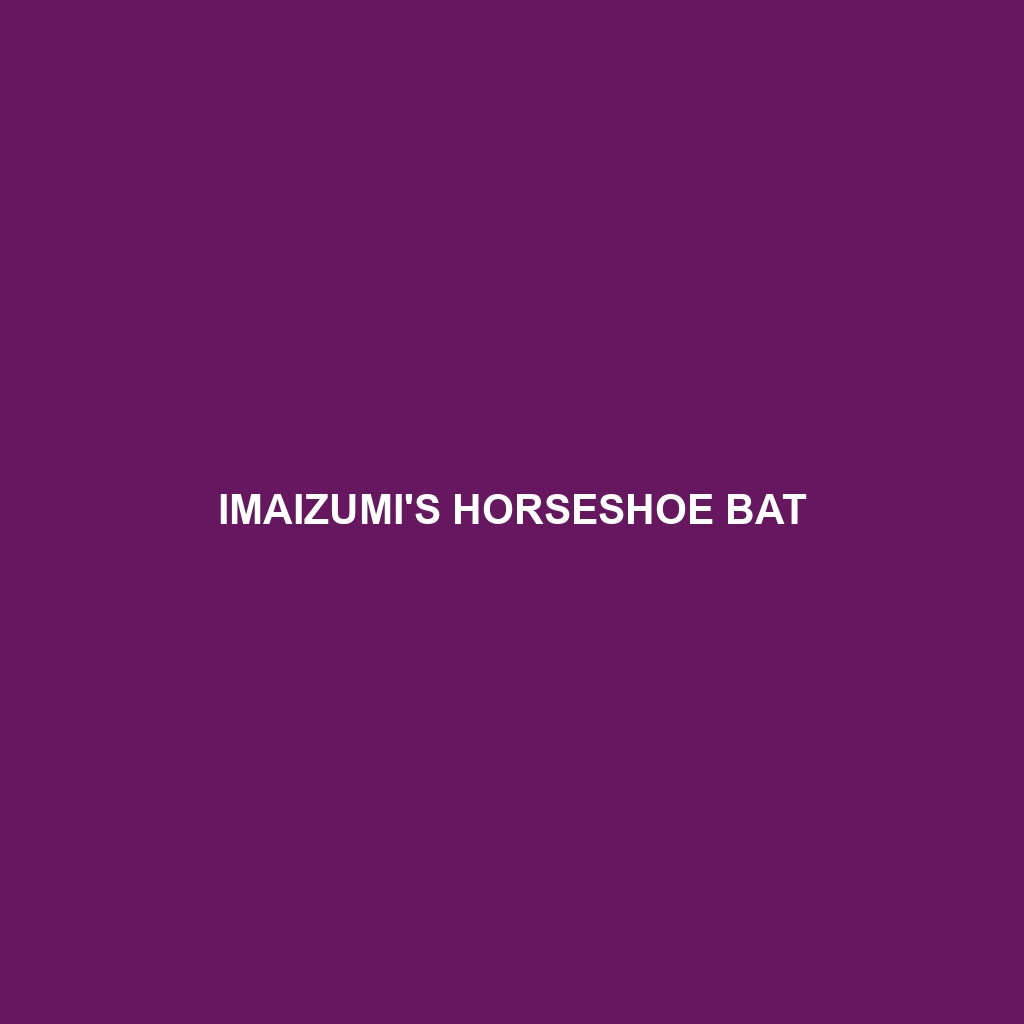Horacek’s Horseshoe Bat
Common Name: Horacek’s Horseshoe Bat
Scientific Name: Rhinolophus horaceki
Habitat
Horacek’s Horseshoe Bat is primarily found in southeastern Asia, particularly in regions such as Vietnam, Laos, and Thailand. These bats thrive in a variety of environments, including tropical and subtropical forests, as well as limestone caves and rural areas. They prefer areas with abundant vegetation that provide both roosting sites and proximity to feeding grounds.
Physical Characteristics
Horacek’s Horseshoe Bat is medium-sized, measuring about 4-7 cm in body length with a wingspan of approximately 30 cm. This species is characterized by its distinctive horseshoe-shaped noseleaf, which is crucial for echolocation. The fur is typically dark brown or gray, with a lighter underbelly. They have large, rounded ears and sharp, elongated wings that aid in agile flight.
Behavior
These bats exhibit nocturnal behavior, emerging from their roosts at dusk to hunt for insects. They are known for their agile flying skills, often performing acrobatic maneuvers during hunts. Horacek’s Horseshoe Bats utilize echolocation for navigation and prey detection, emitting high-frequency sounds and interpreting the returning echoes to locate food sources.
Diet
The diet of Horacek’s Horseshoe Bat primarily consists of moths, beetles, and other flying insects. They are known to forage in a variety of habitats, including forests and wetlands, where insects are abundant. Their feeding habits play an important role in controlling insect populations, contributing to the ecological balance.
Reproduction
Horacek’s Horseshoe Bats typically breed once a year, with the breeding season occurring during the warmer months. Females usually give birth to one pup, which is weaned within a few weeks. The young bats rely heavily on their mothers for survival during the early stages of life, and maternal care is crucial for their development and future foraging skills.
Conservation Status
Currently classified as vulnerable by the International Union for Conservation of Nature (IUCN), Horacek’s Horseshoe Bat faces threats from habitat loss due to deforestation, urban development, and climate change. Conservation efforts are essential to protect this species and its natural habitat from further degradation.
Interesting Facts
Horacek’s Horseshoe Bat is notable for its acute echolocation abilities, which allow it to detect prey even in total darkness. Additionally, it has a unique social structure, often roosting in colonies that can number in the hundreds.
Role in Ecosystem
This species plays a vital role in its ecosystem as both a predator and prey. By feeding on a large number of insects, Horacek’s Horseshoe Bat helps maintain healthy insect populations. Furthermore, they serve as a food source for larger predators, contributing to the biodiversity of their habitat.
